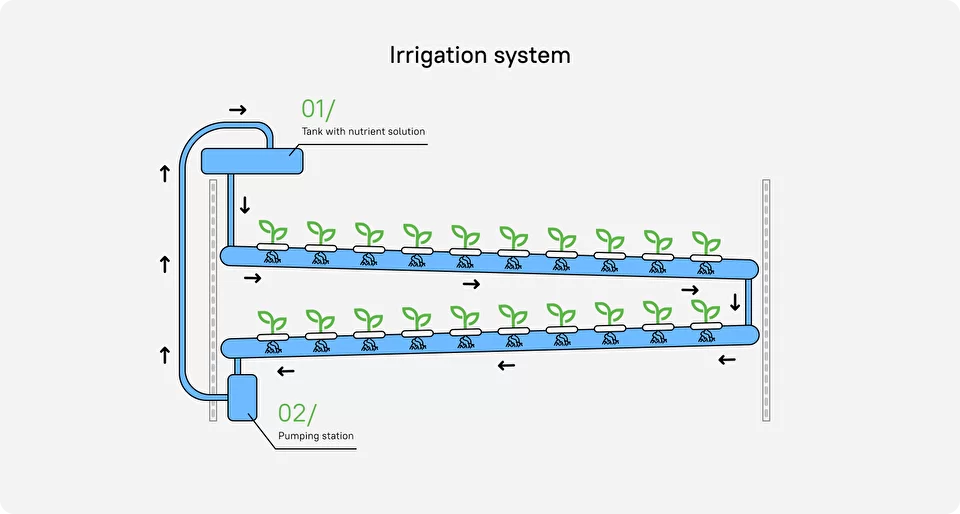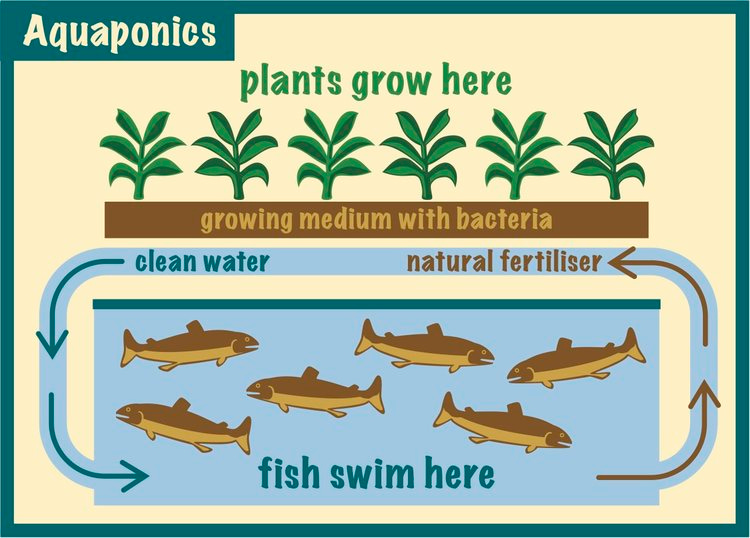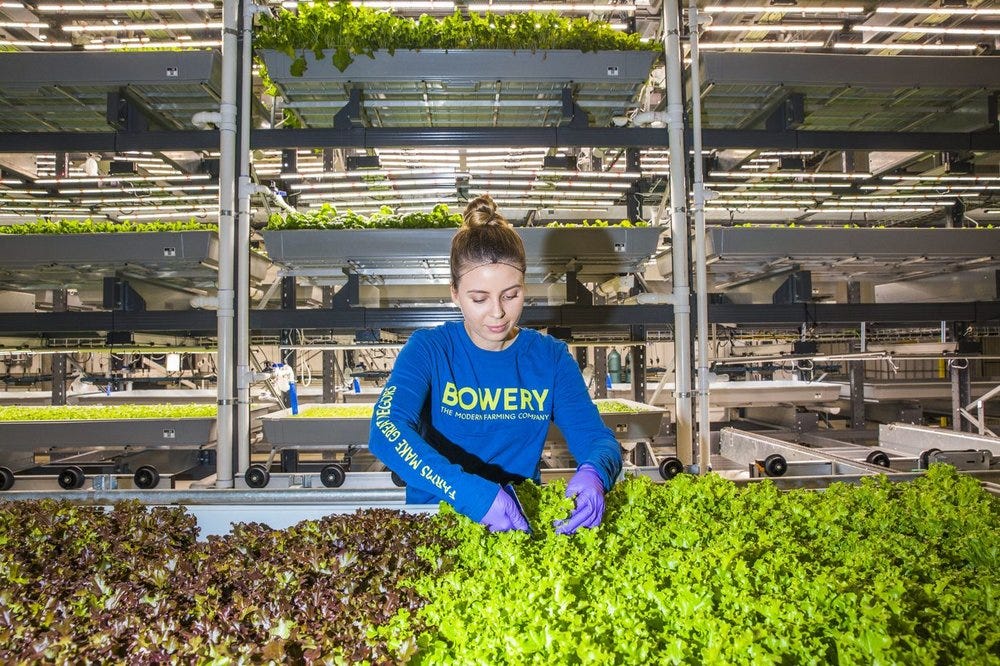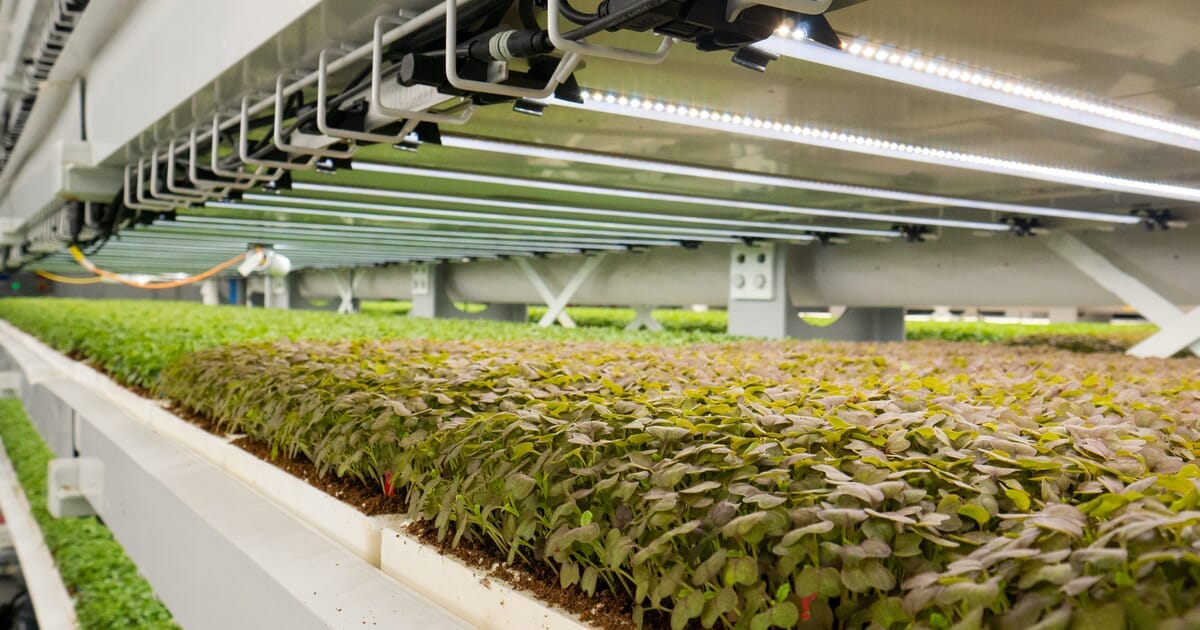Year 2049 is the weekly newsletter that discusses the impactful innovations, discoveries, and research shaping our future.
If this was forwarded to you, subscribe for free to get a new story in your inbox every Friday.
Today’s Edition
Comic: Two strawberries in a vertical farm
Story: Vertical Farming
The pressure on our food supply
The promise of vertical farms
The types of vertical farms
Vertical farming startups
Challenges
Podcast: Mercedes-Benz’s EV future
Comic
Story: Vertical Farming 🌾
The pressure on our food supply
Feeding the world is no easy task and it’s getting even more challenging due to a number of converging problems:
Growing population: The current global population sits at 7.9 billion and is projected to reach 9.8 billion in 2050. The UN estimates we’ll need to increase food production by 50-70% to meet the food demand.
Climate change: Changing weather conditions and rising temperatures are affecting crop yields. In China, floods and other weather events have delayed planting, damaged crops, and lowered yields, causing them to rely on imports from other countries (Bloomberg). In India, droughts and extreme temperatures reaching 40ºC are also causing farmers trouble (The Economist).
Limited agricultural land: Currently, 50% of the world’s habitable land is used for agriculture (Our World in Data) and we can’t scale that indefinitely as the population keeps growing. On top of that, climate change has led to the loss of arable land and accelerated soil erosion.
Water scarcity: Agriculture currently accounts for 70% of freshwater use globally but water scarcity is expected to increase in 80% of croplands globally by 2050.
These factors are increasing the risks of a serious food crisis. Different solutions are being tried and tested. One of them has gained a lot of attention (and funding) over the past few years: vertical farming.
The promise of vertical farms
The problem with traditional farming is that food output is defined by land size. Growing more food would require a proportional increase in land size. And as we know by now, we can’t scale agricultural land indefinitely.
Vertical farming aims to decouple the relationship between food output and land size. Similar to how we’ve housed more people on less land using buildings, can the same be done with food crops?
Vertical farming is attracting attention because of its advantages over traditional farming, including:
Growing food anywhere and anytime without being limited by geography or seasonality.
Increasing food output per square foot by stacking layers of plants in tower-like structures, as opposed to the single-layer approach in traditional farms and greenhouses.
Proximity to cities can increase the shelf life of products while lowering transportation costs and emissions.
De-risking our food supply from being affected by severe weather events and reducing the dependency on food imports.
The types of vertical farms
Vertical farms are fully-controlled environments. Crops are placed in stacks (let’s call them “food skyscrapers” because it’s more fun) and are fed with water, nutrients, and light.
LED lights are used to simulate the sweet sunshine that plants would usually get outdoors. But vertical farms vary in how they deliver water and nutrients to plants. Some common approaches:
Hydroponics
Aeroponics
Aquaponics
#1: Hydroponics
→ Plant roots are constantly submerged in nutrient-rich water without using soil. The water is recycled continuously and pumped back up to be re-enriched with nutrients.
There are different hydroponic setups that you can learn more about here.

#2: Aeroponics
→ Plants are sprayed with nutrient-rich water without using soil. Aeroponic farms use 95% less water than traditional farms.
This is the same technique that NASA uses to grow food in space.

#3: Aquaponics
→ A system that combines aquaculture (raising fish) + agriculture. Fish produce waste that plants can use as nutrients to grow, and plants keep the water clean by absorbing those nutrients. Talk about a power couple.

Vertical farming startups
Indoor farming startups raised more than $1.6 billion globally in 2021 (PitchBook). There are many companies to talk about, so I’ve picked one for each vertical farming method.
Bowery Farming → Hydroponics
AeroFarms → Aeroponics
Upward Farms → Aquaponics
#1: Bowery Farming
Total funding: $646 million. Investors include VC firms like Google Ventures and celebrities like Justin Timberlake, Natalie Portman, and Lewis Hamilton (🐐).
Type of vertical farming: Hydroponics
Products: lettuces, mixed greens, herbs, berries, and more.
Technology:
The company has built a proprietary farm operating system called BoweryOS that offers plants “individualized attention at scale” through a combination of hardware and software.
BoweryOS collects data through sensors and cameras, and a machine learning algorithm helps it take appropriate action. For example, it can adjust the intensity of light, irrigation schedule, nutrients, and other variables based on historical data to optimize plant growth.
Partnerships: Bowery Farming and Unfold, a seed and digital solutions company serving vertical farms, announced they would partner up to start planting vegetables (GlobeNewswire). I recently listened to an insightful interview with Unfold’s CEO which I’ve added to the Deep Dive section (I highly recommend it).
Another hydroponics startup to watch: Plenty, which raised $400 million back in January, is partnering with Walmart to sell fresh produce in their stores.
#2: AeroFarms
Total funding: $238 million. Investors include the Abu Dhabi Investment Office (ADIO).
Type of vertical farming: Aeroponics
Products: leafy greens, berries, tomatoes, and more.
Technology: Like Bowery, AeroFarms uses a combination of sensors and machine learning to ensure optimal plant growth. The company also developed a patented growing cloth that acts as a barrier between plants and the mist being sprayed on them, allowing them to stay clean and ready-to-eat without washing. One of their other patents is for “Leaf colour pattern creation”, which describes a method to create a desired pattern by varying the light source (image below).
Partnerships: AeroFarms is building the world’s largest indoor R&D farm, the AeroFarms AgX, in Abu Dhabi through a partnership with ADIO. The company has also built community farms in New Jersey.

#3: Upward Farms
Total funding: $141 million
Type of vertical farming: Aquaponics
Products: microgreens and fish
Technology: While other startups rely on artificial intelligence, Upward believes in “ecological intelligence” according to CEO Jason Green. Their approach aims to build a robust microbiome which enhances growth, longevity, nutrition, immunity, and other traits.
Partnerships: Upward sells microgreen salads at Whole Foods across New York. The company is also building a 250,000-sqft vertical farm, the world’s largest, which will start operating in 2023. The farm will conserve 100+ million gallons of water and 120+ acres of land on an annual basis, and eliminate 1.7 million food transportation miles per year according to the company.
Challenges
Vertical farming needs to overcome a few hurdles if it wants to live up to the hype around it:
High energy costs: Vertical farms come with a high electricity bill and the biggest contributor to that is LED lighting, which accounts for 65% of electricity usage (iFarm). According to the IEA, LED performance is improving and their cost is going down, but performance improvements are starting to plateau.
Energy source: The high energy costs are problematic, but it would be worse if the electricity used at vertical farms is generated from fossil fuels. The carbon footprint savings from moving closer to cities may evaporate if the source of energy isn’t clean.
Limited crop selection: Most vertical farms so far have focused on growing lettuce, berries, and herbs because they grow relatively quickly. But it’s still unclear whether we can grow the vital crops that we need to feed the world like corn, wheat, and soybeans.
Final thoughts
Vertical farming offers an alternative for growing food in conditions that we fully control, which is the biggest benefit for ensuring the supply of something as vital as food. The proximity to cities also offers multiple benefits: transportation costs and carbon footprints are reduced, while we get fresher produce that won’t spoil as quickly.
The biggest hurdle is that we can’t grow crops like wheat and corn in vertical farms. These are at the heart of our food system and their supply is vulnerable to factors like extreme weather events as we’ve seen in China, but also political events like we’re seeing in Ukraine. Many countries rely on imports for these crops which creates additional risk.
But maybe vertical farming will lead to a reshift of global agricultural land: if all fruits and vegetables are grown indoors, would it free up agricultural land for crops that can only be grown outdoors?
Vertical farming is still a young industry and we still haven’t seen its full potential yet. It won’t replace traditional farming, but it could be the sidekick that takes some weight off its shoulders. Traditional farming is like Iron Man: mature, trusted, and established. Vertical farming is more like Spider-Man: young, exciting, but with a lot of room to grow and improve.
I’ll make sure to provide any updates about vertical farming and the companies I spoke about in future Year 2049 episodes.
Deep dive
If you enjoyed today’s story, I’ve compiled some additional links to satisfy your curiosity:
Vertical Farming Beyond the Hype with Unfold’s CEO John Purcell – Future of Agriculture (Listen on Spotify or Apple Podcasts) – highly recommended
Vertical farms have the vision, but do they have the energy? (Emerging Tech Brew)
Podcast: Mercedes-Benz’s EV future
On the Decoder podcast, Mercedes-Benz CEO Ola Källenius discussed the company’s long-term electrification strategy, the technology behind their EVs, and working with tech giants like Apple.
Listen on: Spotify | Apple Podcasts
Previous episodes you might enjoy
Some other food-related episodes for you:
🤖 NotCo: combining AI and human expertise to create plant-based foods
🚜 John Deere’s push into autonomous farming
🍔 Miso Robotics wants to automate fast food
You can also check out all previous Year 2049 editions to learn about other innovations shaping our future across all aspects of life.
How would you rate this week's edition?












I'm very conflicted regarding vertical farming. As you describe, the promise is real and the technology could be a serious step forward in alleviating food insecurity. Also, vertical farming can be done in food deserts such as inner-city neighborhoods which might lack access to green vegetables otherwise.
On the other hand, vertical farming is resource-intensive; you mentioned energy costs, but there's quite a lot of hardware involved as well. What I would like to see is a return to normalcy of the suburban vegetable garden - think of all the space used / wasted in front yards, highway shoulders, and office parks devoted to nothing but grass. Why are these places not used to grow vegetable crops? If such were done, the vegetables would be close to urban markets, yet the operations would not use the enormous amounts of electricity you describe. Perhaps both approaches could be used.
I'm also excited about research into GMO crops which would thrive in adverse environments - recently I heard of a plant that was being tested for crop production in very saline soils (can't remember where I heard about it though!) Plenty to watch in this space.
There is a way to save on electricity with the help of mirrors. I saw an enormous tomato plant grown underground with no lighting except for a series of mirrors bringing in daylight. Thanks for the interesting article.